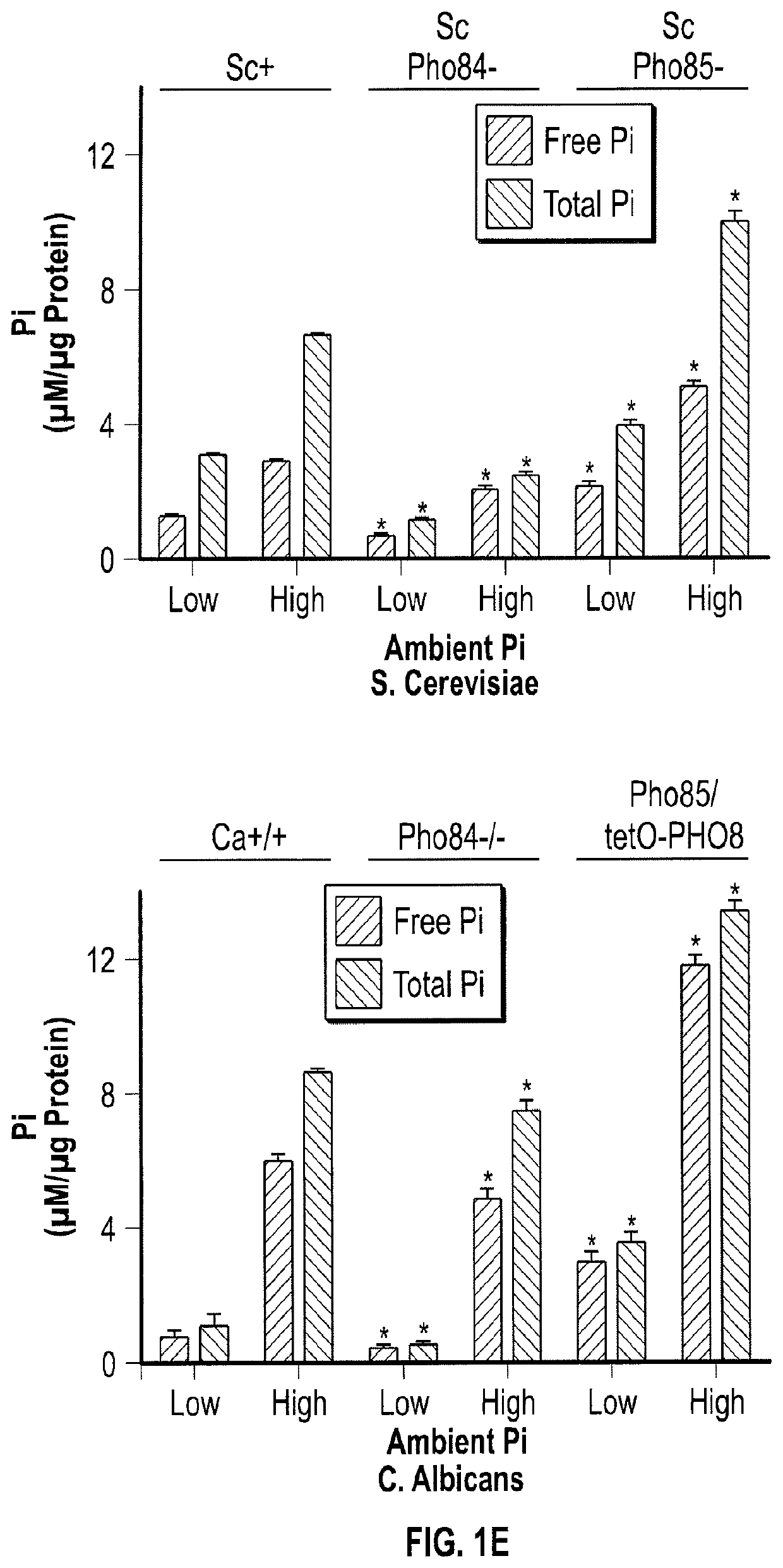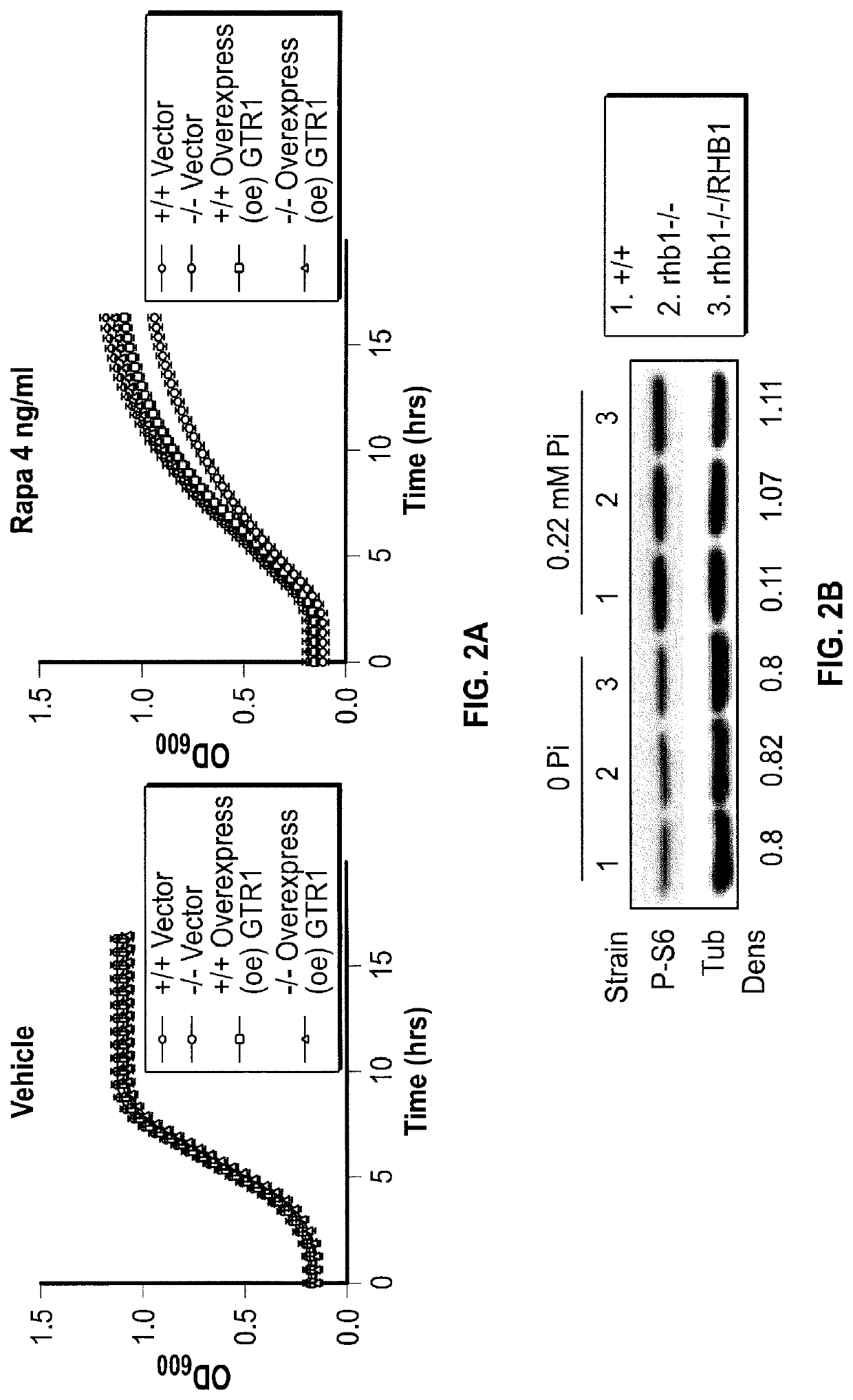Inhibiting the Fungal Cell-Surface Phospate Transporter PHO84
a technology of phospate transporter and fungal cell surface, which is applied in the direction of peptides, cyclic peptide ingredients, biological material analysis, etc., can solve the problems that pathogenic fungi and in particular pathogenic yeast have a significant adverse impact on public health
- Summary
- Abstract
- Description
- Claims
- Application Information
AI Technical Summary
Benefits of technology
Problems solved by technology
Method used
Image
Examples
example 1
of Haploinsufficient Transposon Mutants for Altered Rapamycin Susceptibility Identified a PHO84 Ortholog
[0166]A heterozygous mutant collection of mariner-transposon insertions marked with the dominant selectable marker NAT1 was screened for altered rapamycin susceptibility. A transposon mutant hypersensitive to rapamycin was isolated in which the transposon disrupts the promoter of orf19.655, 67 bp upstream of the predicted translational start site (FIG. 6A). This orf encodes a protein with 66% amino acid identity to S. cerevisiae Pho84 and 55% amino acid homology to the Piriformospora indica PiPT phosphate transporter whose crystal structure was recently described (FIG. 6B). According to Candida Genome Database (CGD) nomenclature, this orf was called C. albicans PHO84, and used the CGD sequence for further analysis. To confirm that rapamycin hypersensitivity of the transposon mutant was linked to the disrupted PHO84 locus, two independent heterozygous deletion mutants and their hom...
example 3
ous and Homozygous Deletion Mutants in PHO84 are Defective in Hyphal Morphogenesis
[0168]TORC1 regulates hyphal morphogenesis in C. albicans, an important virulence determinant. Hyphal morphogenesis was defective in pho84 mutants on YPD agar medium with 10% serum, Spider medium and RPMI 1640 (FIGS. 1D and 7A), while mutant and wild type grew equally in these media when the hyphal temperature signal was absent (FIG. 7B). While many signaling pathways converge on morphogenesis, these findings are formally consistent with defective regulation by TORC1 (2).
example 4
t of Cells Lacking Pho84 is Diminished
[0169]It was questioned if C. albicans TORC1 activity may be downregulated in response to decreased intracellular Pi in pho84 mutants, analogously to the response of S. cerevisiae TORC1 to decreased intracellular amino acids. Using pho85 mutants as controls known to hyperaccumulate intracellular Pi, it was found that intracellular Pi concentrations were lower in pho84− / − null than in wild type cells in low and high Pi-containing media, though the difference was substantially less than in the homologous S. cerevisiae mutant-wild type pair (FIG. 1E). Diminished intracellular Pi concentrations of C. albicans pho84− / − cells may be responsible for the decreased TORC1 activation state, possibly in addition to lack of a putative TORC1-activating function performed specifically by Pho84.
Example 5: Gtr1 Links Pho84 to TORC1 in C. albicans
[0170]Seeking a molecular link between Pho84 and TORC1 activity, the possibility that Gtr1 may connect Pho84 to TORC1...
PUM
| Property | Measurement | Unit |
|---|---|---|
| Fraction | aaaaa | aaaaa |
| Fraction | aaaaa | aaaaa |
| Pharmaceutically acceptable | aaaaa | aaaaa |
Abstract
Description
Claims
Application Information
 Login to View More
Login to View More - R&D
- Intellectual Property
- Life Sciences
- Materials
- Tech Scout
- Unparalleled Data Quality
- Higher Quality Content
- 60% Fewer Hallucinations
Browse by: Latest US Patents, China's latest patents, Technical Efficacy Thesaurus, Application Domain, Technology Topic, Popular Technical Reports.
© 2025 PatSnap. All rights reserved.Legal|Privacy policy|Modern Slavery Act Transparency Statement|Sitemap|About US| Contact US: help@patsnap.com



